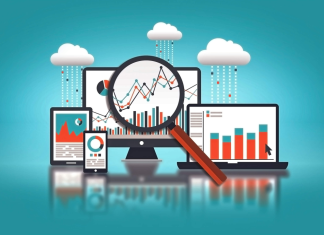Introduction
The retail market has seen a new shift in trend where consumers are more likely to shop online than visit physical stores. The covid-19 pandemic resulted in a shutdown of many small businesses that couldn’t survive the given economic conditions. E-commerce websites are benefitting hugely from this shift which provides a lot more convenience to the consumers and with a wide range of products to choose from. The following stats dig deeper into the retail industry.
Global Overview
- Previous estimates showed that total global retail sales were to reach $26.29 trillion in 2019 and $27.73 trillion by 2020.
- However, events related to COVID-19 drastically changed projections.
- Mid-2020, worldwide retail sales were expected to hit $23.4 trillion by the end of the year. (Business Insider, 2020)
- Ultimately, the year 2020 ended with a 3% decline in total worldwide retail sales at $23.389 trillion.
- Recent events and conditions considered, the global retail market was projected to have a compound annual growth rate (CAGR) of -1% in 2020. (Research and Markets, 2020)
- Fortunately, the latest forecasts bring hope that the overall global retail will rebound to 5.1% CAGR in 2021. (eMarketer, 2021)
- Despite the challenges, global retail e-commerce sales grew by 27.6% in 2020 compared to the previous year, with a total of $4.280 trillion. (eMarketer, 2021)
- China is the largest e-commerce market in the world with $792.5 million in sales, taking 33.3% of the global total. (eMarketer, 2021)
- China is projected to produce as much as $2.779 trillion in e-commerce sales, which is 56.8% of the worldwide total. (eMarketer, 2021)
- 95% of all purchases are projected to be done via e-commerce. (Nasdaq)
- There are 7.9 million e-commerce retailers (etailers) in the world. (retailinsights, 2021)
- Building supplies and distribution centers are the most profitable industries by a 5% net margin. (Investopedia, 2020)
- Six out of 10 retail executives expect they’ll recover in the next one to two years, but a quarter expects a longer timeline of two to five years. (Deloitte, 2021)
- Even before the COVID-19 pandemic hit, online stores and all things e-commerce have proven to be such disruptive forces in the global economy, sweeping all before them but the most robust businesses.
- And as the pandemic forced many to stay home as much as possible, getting on the e-commerce bus became a requirement rather than a mere option for retailers.
- As such, businesses big and small have to look hard at the retail statistics if they want to steer their companies to this drastically altered world of commerce.
- E-commerce is the Fastest-growing Segment in the Retail Industry
- Asia has some of the biggest retail markets in the world in China, Japan, and India.
- E-commerce sales in Q2 2020 accounted for 16.1% of total sales in the US market.
- Asia-Pacific is Expected to Witness the Fastest Growth Rate in the Retail Industry
US Retail Market Statistics
- As of 2019, there were 442,597 brick-and-mortar retail stores in the US. (NACS, 2020)
- There are 2.1 million e-commerce retailers in the US. (retailinsights, 2021)
- Total US retail sales for December 2020 were valued at $540.9 billion. (U.S. Census Bureau, 2021)
- The US retail market saw a 0.7% month-over-month decrease in December 2020. (U.S. Census Bureau, 2021)
- However, year-over-year growth was rated at 2.9%. (U.S. Census Bureau, 2021)
- In all, the total US retail sales for the entire 2020 showed a 0.6% growth compared to 2019. (U.S. Census Bureau, 2021)
- Meanwhile, the US online retail sales grew from $343.150 million in 2019 to $374.38 million in 2020, showing a 9.1% growth. (Statista, 2020)
- Unfortunately, unemployment in the retail sector remained high at 6.7% in November 2020 compared with 2019.
- Amazon accounted for around 39% of online commerce spending in the US in 2020. (eMarketer, 2020)
- For every $100 spent on a local small business, around $68 stays in town. (ILSR)
- The average retail transaction value as of 2018 was $53.98. (Vend)
- The average gross margin in retail as of 2018 was $50.96%. (Vend)
Gloom and Doom for Big Traditional Retailers
- 5,994 US stores already closed in 2019 alone. (The Wall Street Journal, 2019)
- Payless, Gymboree, and Charlotte Russe head the big-name retailers that were hardest hit. (The Wall Street Journal, 2019)
- However, besides the surge of etailers, the pandemic made it even more difficult for physical retailers to survive. A record 12,200 US stores closed in 2020. (Fortune, 2021)
- Around 125 consumer goods and retail companies filed for bankruptcy in 2020. (Fortune, 2021)
Big and Small Retailer’s Statistics
- Amazon, Apple, Google, Microsoft, and Visa are the top brands in 2019. (Brandz, 2019)
- 52.8% of American consumers visit Walmart in any given month. (USA Today)
- In 2020, Walmart stores had 265 million customer visits weekly. (Walmart, 2020)
- Walmart has 11,501 stores as of 2020. (Walmart, 2020)
- Small retailers with 50 employees or less represent 98.6% of all retail firms. (Score, 2019)
- Furniture with $40,000 in average revenue heads small retailers by industry, followed by beer, wine, and spirits ($39,000). (Score, 2019)
- Small retailers hire 39.8% of all retail employees. (Score, 2019)
- Small retailers have an average monthly revenue of $22,341. (Score, 2019)
- Small retailers have an average gross margin of 51%. (Score, 2019)
- US SMBs process about 482 transactions per month. (Vend)
- In all, retail executives name the following as their top investment priorities for 2021: digital acceleration (88%), supply chain resilience (78%), health and safety (78%), and cost structure realignment (72%). (Deloitte, 2021)
Customer Retail Preferences
- Customers spend 69% of their discretionary income each month in-store. (Score, 2019)
- However, 40% of US consumers reduced retail spending in general after the pandemic hit.
- Before the pandemic, customers said trying items in a store is 3x more influential than other purchase factors. (Score, 2019)
- Additionally, 87% of customers said they would attend exclusive access to items or sales in physical stores. (Score, 2019)
- 81% of customers also said they would attend parties organized by physical stores. (Score, 2019)
- Meanwhile, 80% of customers said they would attend a product demonstration or tutorial by physical stores. (Score, 2019)
- 71% of customers said they would attend a game or competition organized by physical stores. (Score, 2019)
- 82% of shoppers attended a retail event in 2018. (Score, 2019)
- Naturally, the pandemic caused a change in consumer behavior. In the US, Click-and-Collect sales grew by 60.4% in 2020 compared to 2019. (eMarketer, 2020)
- 89% of US consumers are more likely to support retail brands that have a positive impact on the world. (GroundTruth, 2021)
- 36% more consumers tried a new product brand during the pandemic. (McKinsey & Company, 2020)
- 79% of consumers now prefer self-checkout and would like to continue doing it after COVID-19. (McKinsey & Company, 2020)
- Curbside orders also increased by 208% during the pandemic. (Adobe Analytics, 2020)
- 59% of customers say they would like to continue curbside pickup after the pandemic. (Adobe Analytics, 2020)
- According to a pre-Thanksgiving survey conducted in 2020, 56% of consumers are anxious about shopping in stores. (Deloitte, 2021)
Ecommerce Retail

- As of 2019, eCommerce only comprised approximately 9.46% of retail sales. (Score, 2019)
- However, e-commerce took 14.3% of the pie in the third quarter of 2020. (U.S. Census Bureau, 2020)
- Only three in 10 executives report that their organizations have mature digital capabilities. As such, major investments in e-commerce, contactless capabilities, and other technology upgrades are underway. (Deloitte, 2021)
- The number of unique online shoppers rose 40% year on year during the pandemic. (Social Media Today, 2020)
- Around 69% of Americans have shopped online. (OptinMaster, 2021)
- 25% of American adults shop online at least once a month. (Oberlo, 2021)
- More than half of US consumers have purchased groceries online. (eMarketer, 2020)
- Half of US consumers prefer starting their holiday shopping journey through online search engines or online-only retailers. (Deloitte, 2021)
- Around 20% of buyers who return an online purchase in-store make an additional purchase. (Synchrony Financial)
Social Media in E-Commerce
- 85% of orders from social media channels originate from Facebook. (Shopify)
- 84% of US online buyers review at least one social media platform before buying. (Pew Research Center)
- 39% of Americans share their experiences with vendors on social media platforms. (Pew Research Center)
- 30% of online customers have posted feedback online. (KPMG)
- $55 – the average order value for customers referred from Facebook. (Shopify)
- $46.29 – the average order value for customers referred from Twitter. (Shopify)
- A 2019 survey revealed that 25% of e-commerce companies planned to sell directly on social media in 2020. (SearchNode, 2020)
- Meanwhile, 15% of e-commerce companies were already selling on social media in 2019. (SearchNode, 2020)
Conclusion
The retail industry is slowly evolving with a mix of online and traditional business setups. This may hinder the employment rate which can be controlled through setting up good customer care facilities and grievance redressal departments. Small and medium enterprises will need to look for promoting and scaling business through online platforms to survive in the market.










